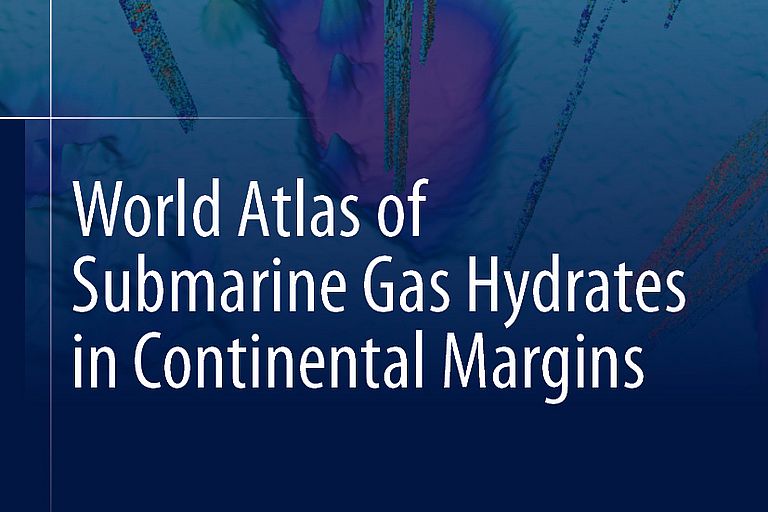Navigating risks and opportunities related to gas hydrates
New “World Atlas of Submarine Gas Hydrates in Continental Margins”
Gas hydrates are a potential future energy source, but they have also been linked to geohazards and climate change: For many reasons, they have been in the focus of marine geology for more than three decades. The new “World Atlas of Submarine Gas Hydrates in Continental Margins” published at Springer Naure presents an overview of gas hydrate systems around the globe, their future prospects, and related research challenges.
“The book was written with researchers, government agencies, and professionals in the gas and oil industry in mind”, explains Professor Dr. Christian Berndt. Along with colleagues from Norway, the United States of America, Italy, and Taiwan, the marine geophysicist at GEOMAR Helmholtz Centre for Ocean Research Kiel (Germany) is one of the editors of the new atlas. “The atlas gives an up-to-date and fairly complete account of the global distribution of marine gas hydrates and provides hundreds of examples that illustrate the geophysical and geological characteristics of gas hydrates in different geological settings and how they are linked to the environment. In addition, the book points out directions for future research on gas hydrates across a range of disciplines.”
Gas hydrates form when gas molecules are captured in cage-like structures of water molecules under low temperatures and high pressures. Conditions that favour the formation of methane hydrates usually occur offshore, a few hundred metres below the sea floor. Rising temperatures can cause these structures to “melt”, destabilise the sea floor and release methane – a very powerful greenhouse gas that may accelerate global warming.
“We do not just have to know where gas hydrates can be found and where related risks loom, but also need to further advance monitoring and exploration technologies. The atlas can help to do just that.”, says Professor Berndt. “We are extremely grateful to the many people from the research community who have contributed to this exciting overview.”
Original publication:
Mienert, J., Berndt, C., Tréhu, A.M., Camerlenghi, A., Liu, C.S. (Eds) 2022: World Atlas of Submarine Gas Hydrates in Continental Margins. Springer Nature. https://doi.org/10.1007/978-3-030-81186-0



